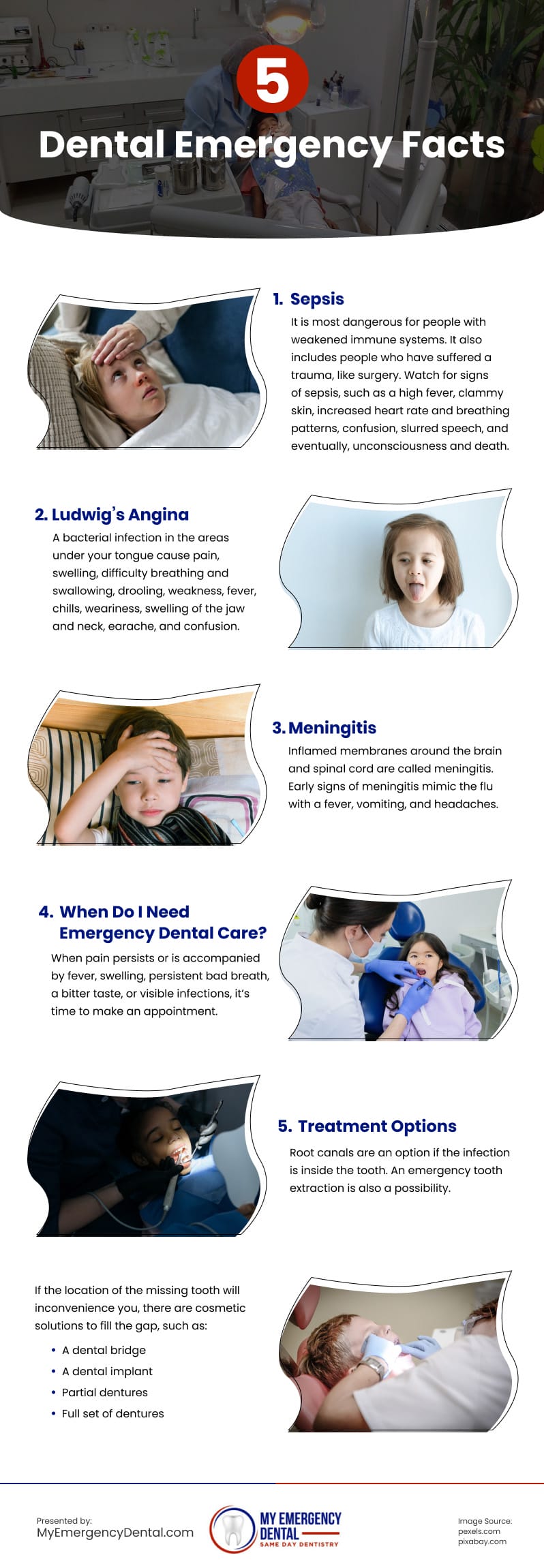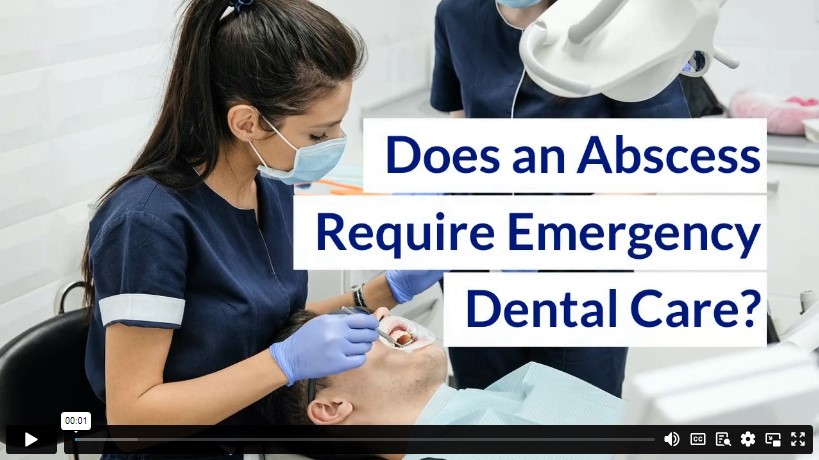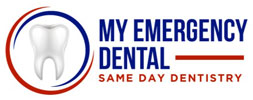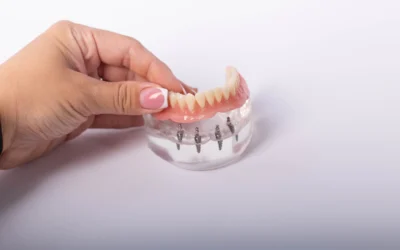Many people have some fear or resistance to going to the dentist, which causes them to put off treatment until they can’t stand the toothache any longer. Unfortunately, putting off dental care can lead to greater pain and even life-threatening medical conditions.
To see why a tooth abscess is so dangerous and what steps the dentist might use to treat it, we need to understand exactly what an abscess is.
What is an Abscess?
An abscess is an infection of the soft tissue in and around your tooth. It starts as bacteria grows in a crack of the tooth enamel, an untreated cavity, or between the tooth and the gums. Some of the early warning signs of infection include:
- Fever
- Bad breath and a bitter taste in your mouth.
- Pain can be dull, sharp, or throbbing even when you are not chewing
- Redness and swelling in your gums
- Tooth sensitivity with temperature changes
- Swelling in the jaw as the infection spreads into the bone
- You may also see the sore, a pocket of tissue filled with pus that may or may not ooze.
How Does an Abscess Affect the Body?
An untreated abscess will eat through the surrounding tissue and spread bacteria to other areas of the body. Some of the most dangerous signs of a spreading infection are:
Sepsis
When the infection spreads to the blood, the condition is called sepsis. Sepsis is most dangerous for people with weakened immune systems, such as the ill, elderly, and children.
It also includes people who have suffered a trauma, like surgery, which temporarily lowers your ability to fight off disease.
Watch for signs of sepsis, such as high fever, clammy skin, increased heart rate and breathing patterns, confusion, slurred speech, and eventually, unconsciousness and death.
Ludwig’s Angina
A bacterial infection in the areas under your tongue causes pain, swelling, difficulty breathing and swallowing, drooling, weakness, fever, chills, weariness, swelling of the jaw and neck, earache, and confusion.
In advanced cases, they may have to intubate you (stick a breathing tube down your throat) to help you breathe while they treat the infection. You would receive broad-spectrum antibiotics through an IV to attack the infection, and possibly intravenous steroids to lessen swelling before emergency dental extractions. They can remove dead tissue, flush bacteria from the site, and discover any additional damage hiding there.
Meningitis
Inflamed membranes around the brain and spinal cord are called meningitis. This condition is serious and can lead to lengthy hospital stays.
Early signs of meningitis mimic the flu with a fever, vomiting, and headaches. Doctors diagnose meningitis through blood tests and/or a lumbar puncture, where they take a sample of cerebral fluid to verify the presence of a viral or bacterial infection.
Once confirmed, treatment options are steroids, antibiotics, supplemental oxygen, and fluids to keep you hydrated.
*If you think you may have symptoms of sepsis or Ludwig’s angina, you will need to go to the hospital ER immediately, as this is a life-threatening issue that must be treated in a hospital setting.
When Do I Need Emergency Dental Care?
Having a toothache won’t necessarily indicate an abscess. When pain persists or is accompanied by fever, swelling, persistent bad breath, a bitter taste, or visible infections, it’s time to make an appointment. If your dentist has no immediate appointment available, don’t wait to seek treatment. Find a 24-hour emergency dentist to prevent an infection from spreading and endangering your health.
Treatment Options
Draining the abscess is essential, as is dealing with any damaged tissue in and around the tooth. An infection can interfere with the numbing medicine, however, so the dentist might prescribe antibiotics to combat the infection before tackling the root of the problem.
Root canals are an option if the infection is inside the tooth. They pull out the damaged tissue and cap it with a crown for strength and stability. This allows you to keep the tooth safely.
An emergency tooth extraction is also a possibility. If the location of the missing tooth will inconvenience you, there are cosmetic solutions to fill the gap, such as:
- A dental bridge (either permanently affixed to your jaw bone or a retainer-like removable piece that holds the missing tooth
- A dental implant requires surgery but will act and feel like your natural teeth.
- If the infection affects more than one tooth, partial dentures may be the solution.
- If the jaw bones are compromised, as with long-term medications that leach minerals from the bones, then a full set of dentures can mitigate the damage and prevent future abscesses.
If you suspect an abscess, see a dentist immediately. The sooner the infection is treated, the less damage it will cause. Less damage means less invasive treatment, better health, a greater chance of keeping your own teeth, and a more reasonable cost for medical care.
Infographic
Many people are reluctant or fearful of visiting the dentist, which leads them to postpone care until their toothache becomes unbearable. We must first comprehend what an abscess is to grasp why a tooth abscess is so harmful and what procedures the dentist might take to treat it. Take a look at this infographic to learn the five dental emergency facts.

Video




